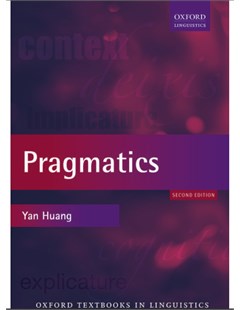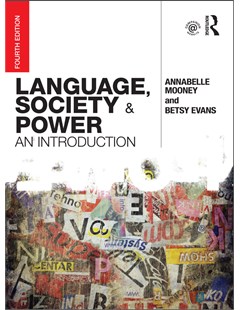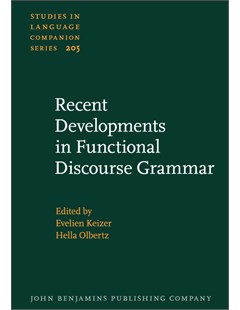Pragmatics (second edition)
The book draws on data from English and a wide range of the world's languages, and shows how pragmatics is related to the study of semantics, syntax, and sociolinguistics and to such fields as the philosophy of language, linguistic anthropology, and artificial intelligence. Professor Huang includes exercises and essay topics at the end of each chapter, and offers guidance and suggested solutions at the end of the volume. Written by one of the leading scholars in the field, this new edition will continue to be an ideal textbook for students of linguistics, and a valuable resource for scholars and students of language in philosophy, psychology, anthropology, and computer science.
2015
The book draws on data from English and a wide range of the world's languages, and shows how pragmatics is related to the study of semantics, syntax, and sociolinguistics and to such fields as the philosophy of language, linguistic anthropology, and artificial intelligence. Professor Huang includes exercises and essay topics at the end of each chapter, and offers guidance and suggested solutions at the end of the volume. Written by one of the leading scholars in the field, this new edition will continue to be an ideal textbook for students of linguistics, and a valuable resource for scholars and students of language in philosophy, psychology, anthropology, and computer science.
The plan of the book is as follows. Chapter 1 is an introductory chapter. The remainder of the book is then divided into two parts. Part I covers those topics that are standardly included in a pragmatics textbook. Within this part, Chapter 2 is concerned with classical and neo-Gricean pragmatic theories of implicature. The focus of Chapter 3 is on presupposition. Chapter 4 is devoted to speech act theory, concentrating on the classic work by Austin and Searle. Chapter 5 provides an in-depth descriptive analysis of various types of deixis. Of these chapters, Chapters 2, 4, and 5 are relatively self-contained, and can be used independently. But Chapter 3 should ideally be read after Chapter 2, and certain sections of Chapter 1 such as Section 1.2 should be revisited after Chapters 2 and 8 have been read. Part II deals with topics which represent new ground in pragmatics, but which are under-represented in any of the existing pragmatics textu0002books. In particular, it focuses on various interfaces between pragmatics and other (core) areas of inquiry. Chapter 6 discusses the pragmatics– cognition interface, concentrating on relevance theory. The interface between pragmatics and semantics is the topic of Chapter 7. Finally, Chapter 8 examines the interaction and the division of labour between pragmatics and syntax, focusing on anaphora and binding.
Yan Huang. Pragmatics (second edition). Oxford University Press, 2015.
 |  |  | |
| Language, society and power: An introduction (4th edition) | Recent developments in functional discourse grammar |
Thứ Năm, 14:56 05/05/2022
Copyright © 2018 Hanoi University of Industry.